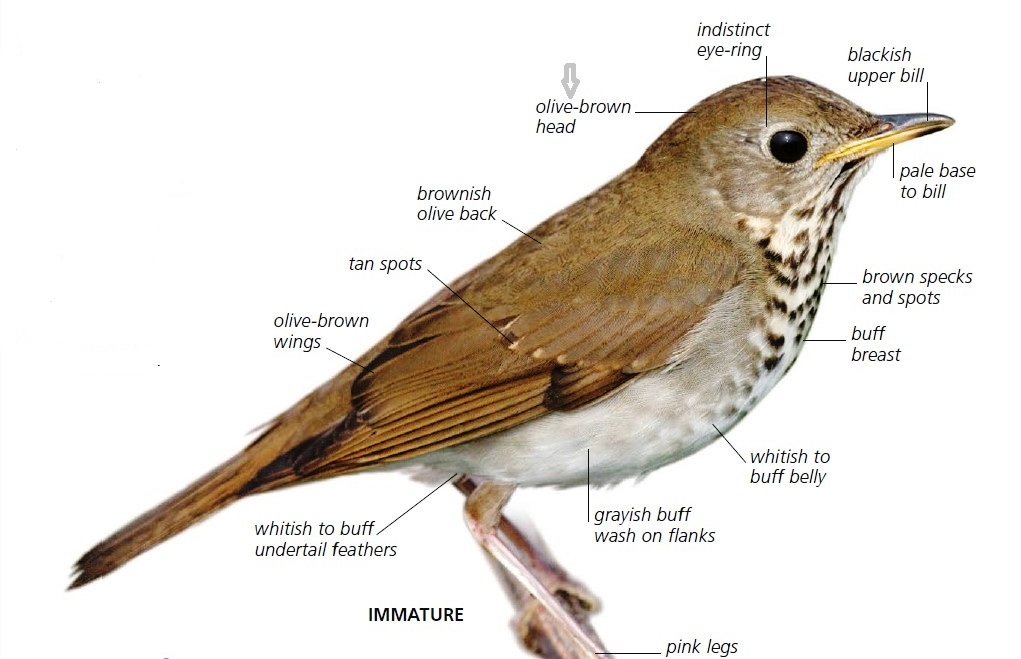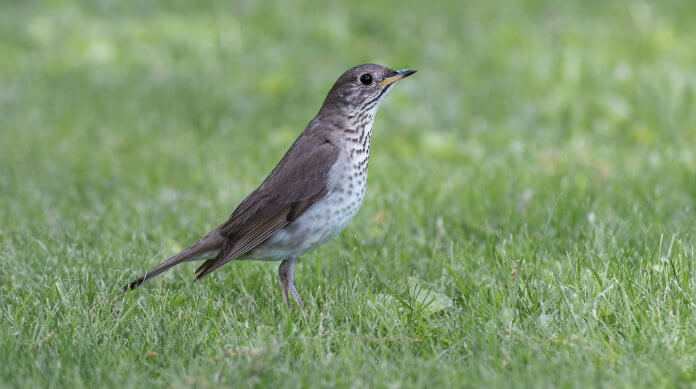Grey-cheeked thrush is a medium size bird 15 to 17 cm in length, a member of a migrant group with veery and Bicknell’s Thrush. Bicknell’s Thrush is different from the Gray-cheeked Thrush, as it has well-marked morphological differences when compared to adjacent populations of the Gray-cheeked Thrush, particularly in size and coloration. The gray-cheeked thrush diet consists of beetles, weevils, wasps, earthworms, ants, sowbugs, crayfish, caterpillars, arachnids, fruits, wild cherries, blackberries, and raspberries.
Gray-cheeked Thrush habitat is stunted boreal coniferous forest(primarily spruce), tall scrub in the taiga, and willow alder scrub in the tundra. Moreover in migration and winter, a variety of wooded habitats, primarily broadleaf forest and woodland.
Bicknell’s Thrush’s breeding and wintering ranges do not overlap with the ranges of the other populations of C. minimus, it has a different song from that of C. minimus. Grey-cheeked thrush song is the most reliable to identify it, as Bicknell’s thrush has complex song burry flute notes.

Gray-cheeked Thrush breeds from northeastern Siberia (Chukotski Peninsula and Anadyrland), northern Alaska, northern Yukon, northern Mackenzie, southern Keewatin, northern Quebec, Labrador, and Newfoundland south to southern Alaska (west to the Alaska Peninsula and Kodiak Island, possibly also on St. Lawrence Island in the Bering Sea), northwestern British Columbia, southern Mackenzie, northern Alberta (probably), northeastern Saskatchewan, northern Manitoba, extreme northern Ontario, central Quebec, Newfoundland, and St. Pierre and Miquelon.

Grey-cheeked Thrush winters are rarely in Panama, primarily on the Caribbean slope, and in South America east of the Andes in Colombia, Venezuela, Trinidad, Guyana, and north-western Brazil. The limits of winter distribution in South America are poorly known, however casual in Costa Rica.
Grey-cheeked Thrush migrates primarily through eastern North America west to eastern Montana, the Great Plains and central Texas (casually to Wyoming and eastern Colorado), the Bahamas, and the Greater Antilles, and less frequently through the Swan Islands and southern Central America (Costa Rica and Panama, most commonly in fall), and rarely through southern Mexico (recorded Tabasco, Chiapas, Campeche, and Cozumel Island off Quintana Roo), Guatemala, Belize (including Half Moon Cay), and northern Honduras (including the Bay Islands).

Gray-cheeked Thrushes stopping over in the Sierra Nevada de Santa Marta in northern Colombia during spring migration gained mass consistently over periods of around 2 weeks before continuing their migration. Casual or accidental in southern British Columbia, Oregon, California (primarily the Farallon Islands), Arizona (Chiricahua Mountains), New Mexico (Clayton), northeastern Keewatin, Clipperton Island (sight reports), Martinique, G uadeloupee, astern Peru, Greenland, the British Isles, and continental Europe (some records may pertain to C. Bicknell), which sight the Aleutian Islands (Shemya) and Washington. One December specimen record for Ontario; other winter reports from North America are unsubstantiated.







